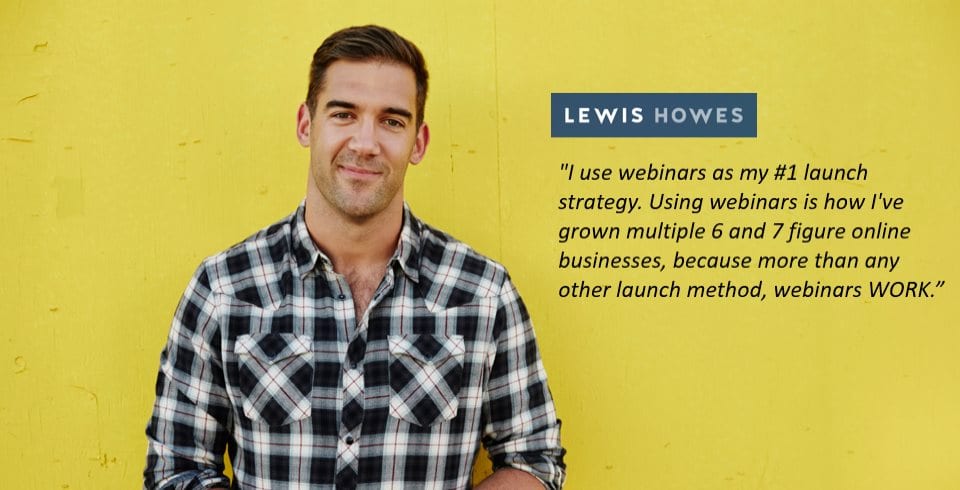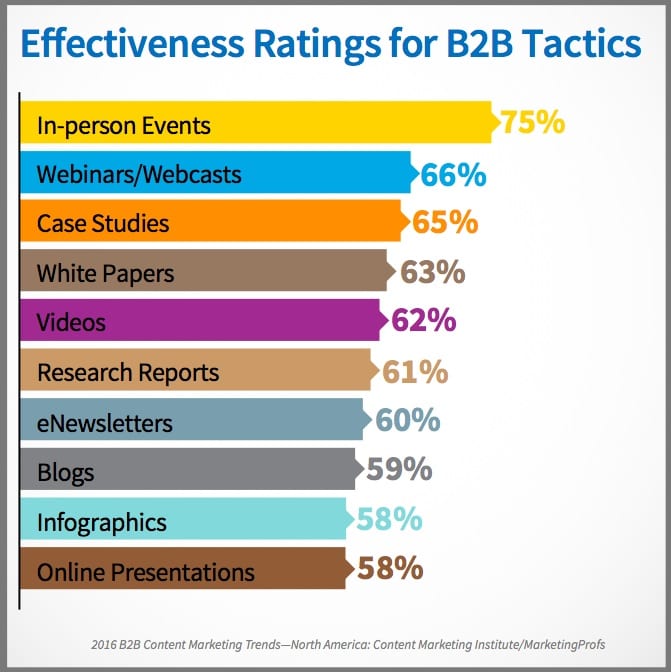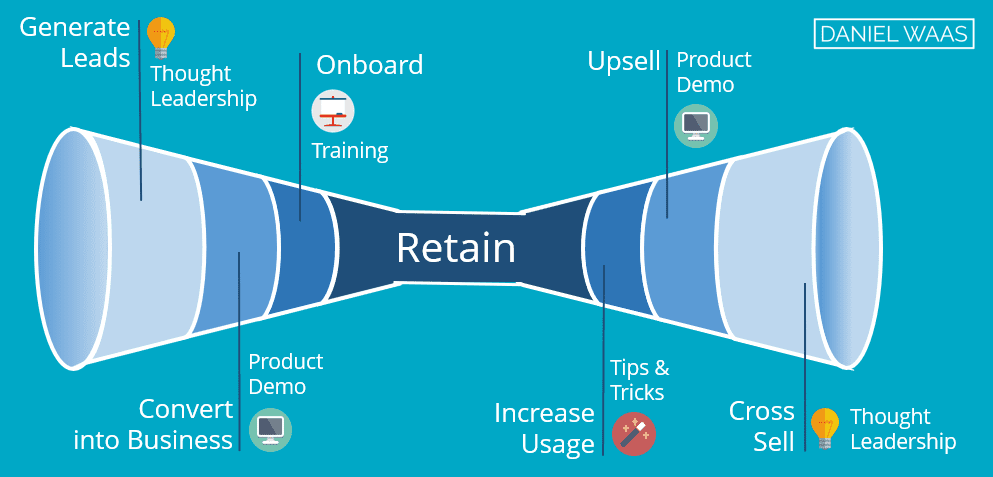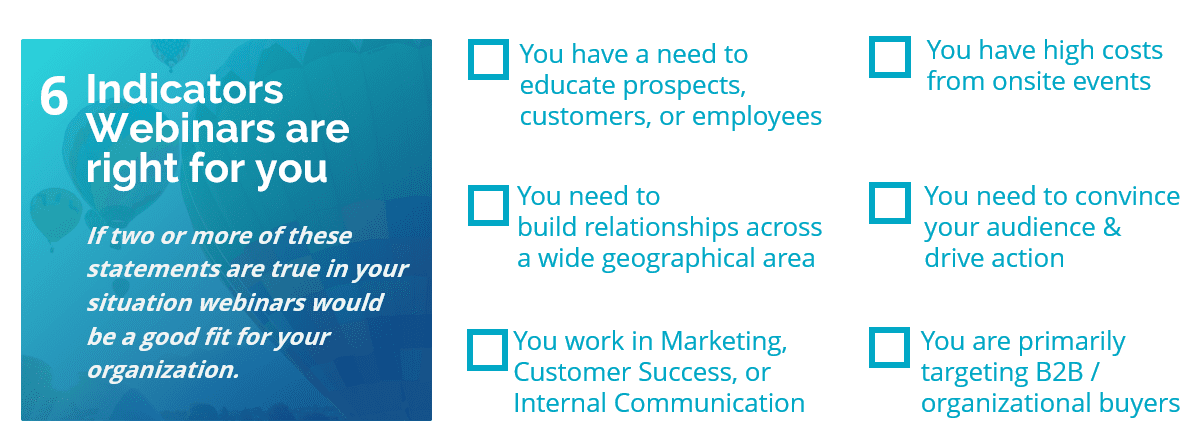There are many ways to skin a cat. Wait that came out wrong – poor choice of proverb. Rest assured I’m a real cat friend. Here’s a cute cat GIF to prove it.
Oh man, I started this post all wrong
What I’m trying to say is that there are many ways to transmit information:
- You could sit down and talk.
- You could write a book, a whitepaper, or a blog post like this one.
- Or how about recording a video or a podcast?
With all these channels readily available, why do a webinar?
Because webinars are a shimmering snowflake 
- For one, they let your personality shine through. You get on camera and are able to interact live with your audience - all your least favorite awkward moments included (not to worry, screwing up live on camera makes you way more likable).
- You might argue in-person meetings and events accomplish the same or an even more personal experience and you’d be right. But any in-person event requires travel - and travel is expensive.
- What about podcasts, videos, or courses then? They all allow my audience to relate to me. Why host webinars instead? They do, but they’re all canned. There is no live interaction possible.
- Even worse for other cost-effective tactics like books, blogs, or even email. If you’re a good writer some of your personality may shine through, but written content lacks not only the excitement of engaging live but also the multi-sensory aspect of seeing and hearing what’s going on.
- That only leaves live streaming but while Facebook and Youtube Live are highly engaging what they’re lacking in is a drive towards results.
- That’s where webinars really shine. The nature of a webinar as a scheduled, registration-required event means the audience is more targeted, more engaged, and ready to take action.
So if your content provides actionable insights you can build a trusted relationship with the webinar attendees and earn the right to follow-up. Having the contact information and opt-in is, of course, another benefit webinars automatically come with and the key reason they’re so effective in creating demand.
In conclusion: Webinars are the only tactic combining the trust of live video with low cost, high reach, & a skew towards business results.
Why webinars are an important tool for marketers
While webinars serve a wide range of use cases they work especially well in marketing. So well, in fact, that many of the top online marketing experts have launched their career on the basis of these online events.
Amy Porterfield, Lewis Howes, & Neil Patel are regularly ranked in the top 10 of online marketing influencers and each of them relies on webinars as an important part of their marketing strategy. Their quotes say a lot but let’s go a little beneath the surface.



All three of them have seen success with webinars in one area especially: converting an engaged audience into closed business.
Amy and Lewis have both built their entire business on the back of webinars. They built large audiences based on social media and email marketing and used webinars to sell online courses and in-depth coaching.
Both have found the process to work so well they’ve created content on the topic targeted at solopreneurs. Lewis with his 7-Figure Webinar training and Amy with her Webinar Checklist. If you’re an in-house marketer, a startup or a non-profit you might find my workshops useful, as that’s where my focus is. I have a beginner workshop and an advanced session. Come join me on one of them or book me to deliver custom webinar consulting tailored to your needs 🙂
Neil, on the other hand, used webinars to generate new subscribers for the analytics platform KISSMetrics. The focus in his case was on generating sales-ready leads that were interested in a demo of the tool.
Amy, Lewis, and Neil all used a similar approach to achieve their goals: turning their expertise into educational content. Each of them goes out of their way to provide massive value upfront and help their audience solve a problem through free content.
Through the live webinars, they create a connection with their audience and build trust. They then offer paid content (Amy, Lewis) or services (Neil) for the people in the audience that are looking to implement their advice.
Why webinars work for generating new business
 Businesses, Entrepreneurs, Non-Profits, and the Higher Education sector have all picked up on the power of webinars for driving an audience to action.
Businesses, Entrepreneurs, Non-Profits, and the Higher Education sector have all picked up on the power of webinars for driving an audience to action.
In a 2016 survey, the Content Marketing Institute found that 66% of B2B organizations use webinars as part of their marketing mix. A more recent study from Demand Gen Report puts the current number as high as 73%.
The Content Marketing Institute also asked respondents to rank tactics by their effectiveness. The result: webinars came in second place right after live events. Webinars provide many of the same benefits, yet come at a fraction of the cost of a live event – and they’re easy to scale across a country, continent, or even worldwide.

The typical webinar use cases
Another benefit of webinars is their versatility. The main use cases for webinars in B2B organizations are
- marketing (increasing brand awareness, thought leadership, and lead generation),
- training (employee training, customer training),
- and corporate communication (department meetings, all hands meetings, town halls).
B2B organizations are evolving their approach to selling. The traditional view of the buying process as a funnel is slowly being supplanted. The new concept of the customer journey or flywheel, the later popularized by marketing automation vendor Hubspot, takes a more holistic view of the interaction between B2B companies and their customers.
But no matter how they visualize the customer interaction, businesses are finding that webinars work at all steps of the way.
Marketing generates brand awareness and new leads through thought leadership content and helps Sales convert those leads into new business with bottom-of-the-funnel content like workshops and public demos (also called “deminars”).
Customer Success teams then use webinars to onboard customers and train new users on a product or service. Product managers and product marketing teams introduce new features to the user base while customer marketing introduces related concepts to encourage up- and cross-selling.

Why webinars are so effective
All things considered, there are two key factors that make webinars so effective in business: scale & impact.
Their nature as web-based events means webinars are easy to scale – they reach a large audience at a much lower cost than physical events.
Yet they share the positive traits of in-person interaction and combine them with a long watch time – the average webinar attendee stays on for 52 minutes. 52 minutes to build trust by being personable, showing your expertise, and building a relationship.
So are webinars right for you? Have a look at the infographic below. If you tick two or more of these boxes webinars will be a great addition to your tactic mix.

Are you ready to implement webinars? Read my tips on how to implement a webinar program or join one of my upcoming intensive workshops (sign-up below).
Want to generate more business with webinars?
Join one of my monthly intensive workshops. Sign-up is open now:
It’s also a good idea to start looking at finding the right software. I keep a nifty comparison of the various entry-level webinar platforms out there.
What about you?
What do you see as the main benefits of webinars? How are you planning to implement them and what problem are you trying to solve? I’d love to hear about it in the comments below.



